- Joined
- Dec 20, 2012
- Messages
- 9,422
In another thread, Brino asked some questions about gravers that we'll take up here:
@mikey[/USER], that sounds like it's worth it's own thread. Maybe you could answer some questions; are you referring to brass projects only? if not, what materials do you work free-hand? are they HSS tools? what shapes are the business ends? how long of handles?
Gravers are hand held turning tools that can be used to cut and shape any machinable material, from plastics to brass, aluminum to stainless and they will cut hardened steel, too. They can cut just about any shape you can imagine as long as its cylindrical or round or concave or convex. They can chamfer, ease a corner, round a corner, find the center at the end of a work piece turning in the chuck. And they can hog metal faster than you would think, and then finish a piece to a near mirror finish. If you have turned wood with a wood turning tool then you already know how to use a graver.
On my Sherline lathe, a graver touches almost every piece that I turn. I may want to minutely radius an edge so that it looks sharp without being sharp, or I may want to dome the end of a knurled knob or cut a decorative v-shaped or concave notch in piece. I don't own a radius tool; if I want a knob I just cut it with a graver to whatever shape I want, in whatever material I want.
Gravers are simply square or round 1/8" or 3/16 HSS/cobalt turning tool bits embedded in a piece of wooden dowel from the hardware store. Patterned after those used by WR Smith, a legendary horologist and fine gentleman, they have been used for over a hundred years, mainly by watchmakers and clockmakers. Gravers are simple to make. You simply grind the end of a tool bit to a 60 degree angle on a bench grinder, then hone them on a fine India stone, followed by a Translucent Arkansas stone.
I am attaching a .pdf below that tells you exactly how to make these tools; it is also available on the Sherline website. If you are interested in seeing Mr. Smith use gravers you can buy his video entitled "TOOLING THE WORKSHOP FOR CLOCKMAKERS & MODELMAKERS" directly from him.
EDIT: I reviewed my videos and found that I made an error on the specific video containing the most graver-specific information. The better video is: Graver Making & Hand Turning for Clockmakers and Modelmakers. I apologize for the error.
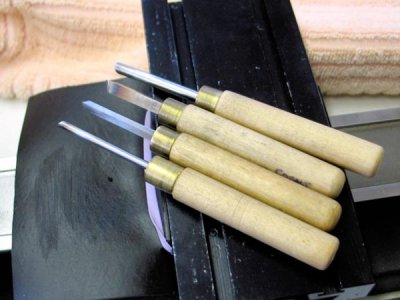
Over the years, I have come to prefer a 1/8" square and round tool bit. The square tool is used to hog, shape and contour. The round tool is used to shape, contour and finish curved surfaces and can take a whisper-thin cut to produce a near mirror finish.
Gravers must be used with a tool rest. I made mine from plans from Mr. Smith but the same rest can be purchased from Sherline; unfortunately, they only fit Sherline lathes but the rest that contacts the gravers can be adapted to any lathe with some thought. I am in the process of doing just that for my Emco lathe. My tool rest is made from precision ground tool steel. The tool support itself is hardened and tempered O-1 steel.
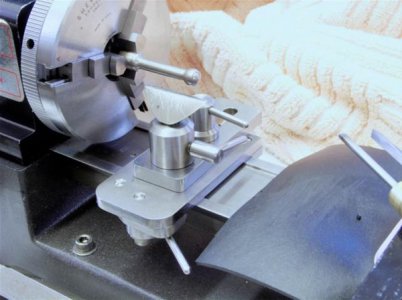
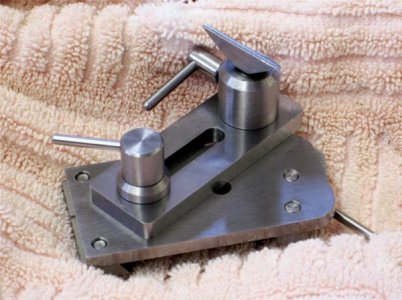
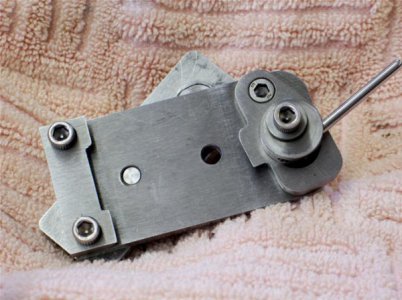
The tool support is vertically adjustable and can turn horizontally in any direction. The lever you see under the rest locks it to the dovetailed ways of a Sherline lathe.
As I said, a graver touches almost everything that comes off the lathe. I can add small touches that are subtle and unnoticed but add a touch of quality to the work. If I do it right, you won't notice this unless I mention it. Here is an example of what I mean:
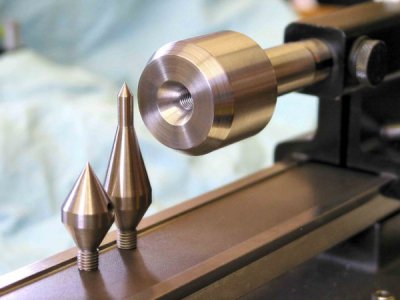
This live center for my Sherline lathe is made from 1144 steel, with hardened tips. All edges were eased with a graver. You wouldn't notice this unless I pointed it out but you would feel it if you picked it up - just feels good in the hand, you know?
Anyway, I hope this piques your interest in this tool. They are easily amongst my most useful tools and I like to think they take my work to a higher level. I apologize for not having more or better pics available - I didn't expect to be discussing this when I woke up this morning.
@mikey[/USER], that sounds like it's worth it's own thread. Maybe you could answer some questions; are you referring to brass projects only? if not, what materials do you work free-hand? are they HSS tools? what shapes are the business ends? how long of handles?
Gravers are hand held turning tools that can be used to cut and shape any machinable material, from plastics to brass, aluminum to stainless and they will cut hardened steel, too. They can cut just about any shape you can imagine as long as its cylindrical or round or concave or convex. They can chamfer, ease a corner, round a corner, find the center at the end of a work piece turning in the chuck. And they can hog metal faster than you would think, and then finish a piece to a near mirror finish. If you have turned wood with a wood turning tool then you already know how to use a graver.
On my Sherline lathe, a graver touches almost every piece that I turn. I may want to minutely radius an edge so that it looks sharp without being sharp, or I may want to dome the end of a knurled knob or cut a decorative v-shaped or concave notch in piece. I don't own a radius tool; if I want a knob I just cut it with a graver to whatever shape I want, in whatever material I want.
Gravers are simply square or round 1/8" or 3/16 HSS/cobalt turning tool bits embedded in a piece of wooden dowel from the hardware store. Patterned after those used by WR Smith, a legendary horologist and fine gentleman, they have been used for over a hundred years, mainly by watchmakers and clockmakers. Gravers are simple to make. You simply grind the end of a tool bit to a 60 degree angle on a bench grinder, then hone them on a fine India stone, followed by a Translucent Arkansas stone.
I am attaching a .pdf below that tells you exactly how to make these tools; it is also available on the Sherline website. If you are interested in seeing Mr. Smith use gravers you can buy his video entitled "TOOLING THE WORKSHOP FOR CLOCKMAKERS & MODELMAKERS" directly from him.
EDIT: I reviewed my videos and found that I made an error on the specific video containing the most graver-specific information. The better video is: Graver Making & Hand Turning for Clockmakers and Modelmakers. I apologize for the error.

Over the years, I have come to prefer a 1/8" square and round tool bit. The square tool is used to hog, shape and contour. The round tool is used to shape, contour and finish curved surfaces and can take a whisper-thin cut to produce a near mirror finish.
Gravers must be used with a tool rest. I made mine from plans from Mr. Smith but the same rest can be purchased from Sherline; unfortunately, they only fit Sherline lathes but the rest that contacts the gravers can be adapted to any lathe with some thought. I am in the process of doing just that for my Emco lathe. My tool rest is made from precision ground tool steel. The tool support itself is hardened and tempered O-1 steel.



The tool support is vertically adjustable and can turn horizontally in any direction. The lever you see under the rest locks it to the dovetailed ways of a Sherline lathe.
As I said, a graver touches almost everything that comes off the lathe. I can add small touches that are subtle and unnoticed but add a touch of quality to the work. If I do it right, you won't notice this unless I mention it. Here is an example of what I mean:

This live center for my Sherline lathe is made from 1144 steel, with hardened tips. All edges were eased with a graver. You wouldn't notice this unless I pointed it out but you would feel it if you picked it up - just feels good in the hand, you know?
Anyway, I hope this piques your interest in this tool. They are easily amongst my most useful tools and I like to think they take my work to a higher level. I apologize for not having more or better pics available - I didn't expect to be discussing this when I woke up this morning.
Attachments
Last edited:
